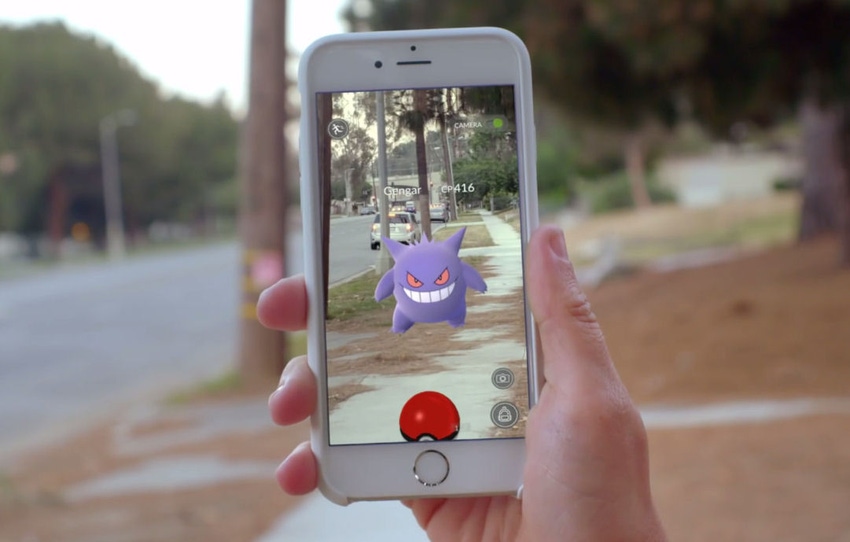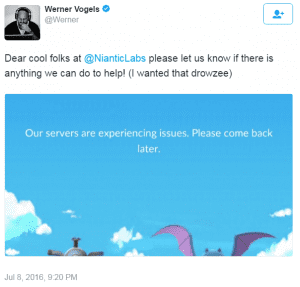Pokémon Go servers overwhelmed by demand and DDoS attack
Pokémon Go users have continued to struggle as the app’s developer Niantic Labs recovers from hacker attacks and unprecedented demand for the game.
July 18, 2016

Pokémon Go users have continued to struggle as the app’s developer Niantic Labs recovers from hacker attacks and unprecedented demand for the game.
Claimed attacks from various hacker groups would have appeared to cover up server inadequacies at Niantec Labs, as the team seemingly struggles to meet capacity demands following the games launch in 27 countries worldwide.
Over the course of the weekend, various hacker groups including PoodleCorp and OurMine have claimed responsibility for a distributed denial of service (DDoS) attack, causing a slow and clunky experience for many players around the world. Although the Niantec Labs team has played down the incidents, disruptions have continued into Monday morning with the Telecoms.com editorial team unable to access the game effectively. Whether this can be attributed to the claimed attacks or a lack of server capacity is unclear for the moment.
The hacker saga would have appeared to have started over the weekend, with OurMine stating on its website, “Today We will attack “Pokemon Go” Login Servers! so no one will be able to play this game till Pokemon Go contact us on our website to teach them how to protect it! We will attack it after 3-4 hours! Be ready! We will update you!” This was followed by another statement declaring the servers were down. PoodleCorp claimed the day before (June 16), it had caused an outage, though also said to expect a larger attack in the near future.
While both of these attacks have attracted headlines, it would also appear to have covered up shortcomings on the company’s infrastructure and its ability to deal with high demand. The launch of Pokémon Go has been well documented over the last few weeks as it has been lauded by numerous sources as the biggest mobile game in US history. Even before its official release in the UK, EE announced it saw 350,000 unique users of Pokémon GO on its network.
 “This is the fastest take up of an app or game we’ve ever seen – and that’s before it’s officially launched! People across the country are going to be relying on a mobile data network that’s everywhere they go,” said Matt Stagg, EE head of video and content strategy.
“This is the fastest take up of an app or game we’ve ever seen – and that’s before it’s officially launched! People across the country are going to be relying on a mobile data network that’s everywhere they go,” said Matt Stagg, EE head of video and content strategy.
Despite claims the server problems have been addressed, complaints have continued to be voiced. Server status tracking website Downdetector stated 39,013 complaints were registered at 22.00 (EST) on July 17. The Niantic Labs team are seemingly underestimating demand for Pokémon Go with each launch, which would be a nice problem to have.
While Telecoms.com was unable to identify Niantic Labs specific cloud set-up, other reports have identified Google as the chosen platform. Although there are no specific announcements linking the two organizations, Niantec was spun out of Google in October last year, and currently has John Hanke at the helm, who was previous VP of Product Management for Google’s Geo division, which includes Google Earth, Google Maps and StreetView. A job vacancy is also on the company’s website which asks for experience in dealing with Google Cloud or AWS.
 Although AWS has been listed on the job vacancy, it would be fair to assume it is not involved currently as CTO Werner Vogels couldn’t resist making a joke at the affair stating “Dear cool folks at @NianticLabs please let us know if there is anything we can do to help!” on his twitter account. This could imply some insider knowledge from Vogels as it would be most likely the company would take a swipe at its closest rivals in the public cloud market segment, namely Google or Microsoft Azure.
Although AWS has been listed on the job vacancy, it would be fair to assume it is not involved currently as CTO Werner Vogels couldn’t resist making a joke at the affair stating “Dear cool folks at @NianticLabs please let us know if there is anything we can do to help!” on his twitter account. This could imply some insider knowledge from Vogels as it would be most likely the company would take a swipe at its closest rivals in the public cloud market segment, namely Google or Microsoft Azure.
The claims of the DDoS attacks would appear to have come at an adequate time, as it has taken the heat off the cloud infrastructure inadequacies. According to Business Insider, Hanke said the international roll-out of the game would be “paused until we’re comfortable”, with relation to the server capacity issues. It would seem the company is prepared to ride the wave of demand, as well as complaints, and fix the server problem later, as launches and server issues continued following that interview.
VR & AR World 2016, 19-20 October, London
If you’d like to meet other VR and AR experts and find out more about how both virtual and augmented reality are being used across a wide range of industries, and how companies plan to use them in the future, visit the VR & AR World event website.

About the Author(s)
You May Also Like








.png?width=300&auto=webp&quality=80&disable=upscale)


_1.jpg?width=300&auto=webp&quality=80&disable=upscale)


.png?width=800&auto=webp&quality=80&disable=upscale)